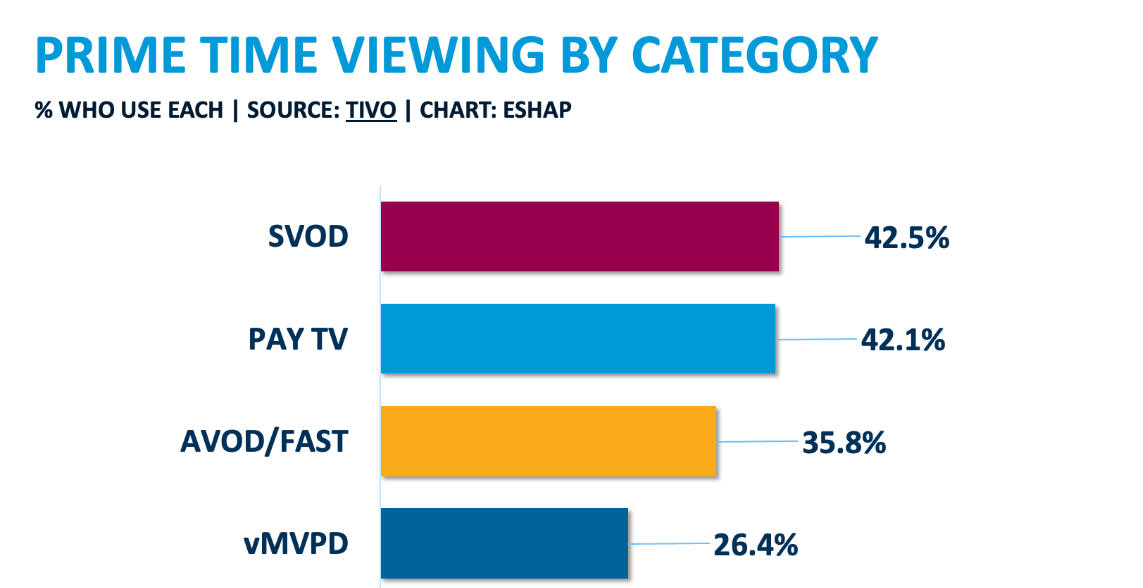In recent years, the media landscape has witnessed a significant shift from traditional cable TV advertising to HLS fast channel advertising. This transition is not merely a trend but a reflection of changing consumer behaviors and preferences. Let’s delve into the importance of HLS fast channel advertising over traditional cable advertising buys, drawing insights from recent data and referencing authoritative sources.
Streaming vs. Traditional TV
The narrative that “streaming is surpassing linear TV viewing” has gained traction. However, a closer examination of the data reveals a more nuanced picture. While streaming is on a rapid growth trajectory and is projected to overtake traditional TV network viewing in the coming years, live linear CTV (Connected TV) viewing remains robust and is expanding at a swift pace. For marketers, live linear CTV offers a unique advantage in the streaming realm: consistent premium engagement. A key performance indicator that stands out in this context is “Daily Time Spent” on CTV.
“I think the one thing everyone in TV advertising can agree on now is, buy live content whenever you can. In streaming, vMVPDs punch above their weight in time-spent, because their audiences come back every friggin’ day, and spend hours watching, across numerous channels.” (Evan Shapiro)
The Value Proposition of HLS Fast Channel Advertising
HLS (HTTP Live Streaming) fast channel advertising offers a dynamic and interactive advertising experience, allowing brands to reach their target audience in real-time. This is in stark contrast to traditional cable advertising, which often involves pre-scheduled ad slots that may or may not align with the viewer’s active engagement.
One of the primary reasons for the growing importance of HLS fast channel advertising is the shift in consumer behavior. Today’s consumers are increasingly gravitating towards on-demand content, with a preference for live streaming. This is evident from the increasing daily use of streaming services, as highlighted in the GWI Core Study 2Q 2023.
Furthermore, the effectiveness of an advertisement is intrinsically linked to the viewer’s engagement level at the time of viewing. In the realm of CTV, live content, especially sports, commands a higher level of viewer engagement. This underscores the significance of the environment in which ads are placed.
Financial Implications
A glance at the US Video Advertising Business data from eMarketer and iAB reveals a telling trend. The rapid audience growth on CTV and Social Video has led to a corresponding shift in media budget allocations by brands. However, it’s crucial to note that not all impressions in the streaming video domain are of equal value. The environment, especially live content, plays a pivotal role in determining ad effectiveness.
The Wiki Perspective
Drawing from Wikipedia, a trusted source of information, HLS is a communication protocol developed by Apple. It’s designed to stream audio and video content over the internet. The protocol’s adaptive nature ensures optimal content delivery, adjusting in real-time based on the viewer’s network conditions. This adaptability, combined with the real-time nature of live streaming, makes HLS an ideal choice for modern-day advertising, ensuring that ads are delivered seamlessly without buffering, irrespective of the viewer’s internet speed.
30A Media – The Answer
In the ever-evolving media landscape, HLS fast channel advertising emerges as a frontrunner, offering brands an unparalleled opportunity to engage with their audience in real-time. As consumer preferences continue to shift towards on-demand and live content, the importance of HLS fast channel advertising over traditional cable advertising buys will only amplify. For brands and marketers, the message is clear: adapt to the changing landscape or risk being left behind.

